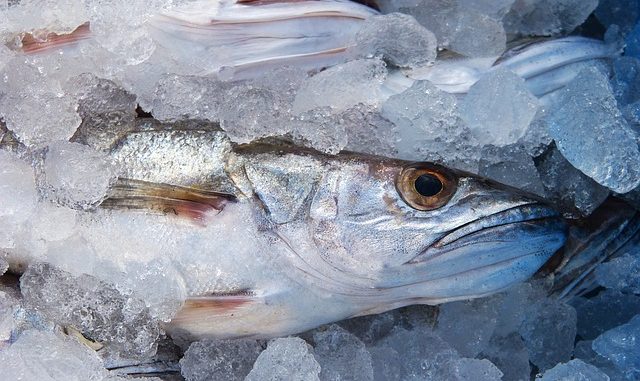
Hake is one of those sea fishes that might not be of enormous interest if it wasn’t for the fact that it is so sought after, especially off the Argentinian seas. To a meat loving nation like Argentina, hake is the preferred seafood of choice and so it has become in western Europe too. About forty years ago there was a dramatic decline in the amount of cod and haddock being caught in the Atlantic. To compensate trawlers began looking for new source of white fish in particular and in the southern hemisphere waters they found hake. Not that hake hasn’t always been enjoyed – the Latin countries have traditionally eaten this fish but in other fish eating countries, the flavour of hake was considered too bland and unappealing with a soft, slightly mushy texture.
Hake is often called names. In the USA, they call it ling or even whiting but not the whiting that is known of in Europe. The French call it ‘saumon blanc‘ which is translated as white salmon.
Most hake is now caught off the coast of South America although there are some species found off South Africa. The genus Merluccius is commonly found in South Atlantic waters. There are four species to consider. The South African hakes or Cape Hakes include two species –Merluccius capensis and Merluccius paradoxus. If you cross over to Argentina, then the two species here are Merluccius hubbsi which is called Argentine hake or Patagonian hake; and Merluccius polylepsis–a species caught off the southern tip of South America. It is just worth mentioning another species called Pacific Hake (Merluccius productus) which is commonly eaten on the other side of the world.
Argentine Hake is fished off Brazil and Uruguay too but in recent years, illegal fishing has started to eat into the stocks of this important food. For Argentina, their eponymous hake accounts for 50% of their total fish catch (Marrari et al., 2016). One statistic which looked 8 months from January to September 2016 reported 68, 000 tons of fish was exported to the US alone. Its processing industry has grown by 30% in the last few years to accommodate hake.
Most hake is frozen and turned into skinless fillet blocks to make fish sticks and fish fingers. Much of it is than exported from South America to the USA. hake dwell in the cold bottom waters of the Falklands shelf but are drawn up into warmer surface waters when the nets are brought up. Hake has a steel like colour with a silvery belly.
The fish really does have a bland flavour. Ever wondered why hake is so often paired with chorizo and strong sauces. It is in fact the ideal vehicle for fish stew. The colour of the fish is an off-white to pale pink – very soft with a tendency to bruise. Research shows that Argentine Hake in particular as with other hakes probably has a thin myosepta surrounding the muscle fibres (Varona, 1977). The fish are damaged easily when the fish which are drawn into warm water are handled under sub-tropical conditions aboard a fishing vessel or fish processor.
Generally as with most fish, chilling rapidly is an absolute necessity especially after landing. They must also be handled carefully from then on in. Texture degradation is fairly rapid after that.
Purchasing And Cooking With Hake
The fish can be bought whole, with head in tact at the fishmongers although it is easier to handle as a steak or fillet. Some suppliers dry it and/or smoke it.
In preparing the this fish, the fillets need little attention. Check for pin bones in particular though.
In fish cuisine, hake has largely replaced cod. In fact it s a member of the cod family but its flavour is more subtle than the meaty cod itself. Cooking improves the texture making it more firm and meaty. It takes flavours very well – tomatoes, chorizo (as I keep mentioning), paprika all work really well with this fish.
In Spain, hake is often cooked as a one-pot dish called Merluza à la Gallega . This is a stew of hake with potatoes and chorizo from the northern Spanish region of Galicia in Spain. The same dish works with haddock and cod but hake is probably the more authentic.


I noticed as a trawlerman that hake is making more of its way into our waters. I don’t really know why it is a fish for the Southern oceans because we see it off the Irish coast all the time. A great fish in all honesty and I think this site should include some recipes for it.
I like this fish. Actually tastes better than haddock and cod in my view and generally worth it with chips and a segment of lemon. makes for a really nice dish.